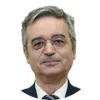Book traversal links for 1983-1984: A crise que demorou a chegar
The global economy went through an oil crisis in 1979 following the political crisis in Iran, one of the main world producers of oil at the time. The instability led to a sharp and rapid increase in oil prices, from USD 15.50 to 38.90 per barrel between early 1979 and 1981.
In economies that were very dependent on oil, this increase triggered a knock-on effect in several products and services. Coming from a decade if high inflation, many developed economies increased interest rates to try to mitigate the rise in inflation.
The economic slowdown was severe. The ten countries that were in the European Economic Community – now the European Union – went into a recession in early 1980. Unemployment increased and investment fell.
The same happened in the United States the following year.
Economic incentives
The Portuguese external context was particularly difficult, and the government implemented some policies to counter the impact of the external crisis.
The state budget was used to try to stimulate the economy and public spending increased. Unlike what was happening in other countries, the Portuguese authorities lowered interest rates to boost consumption and investment.
As a result, inflation increased. The government used administrative price controls in an attempt to halt it. At the time, prices of many goods and services were set by governments, including coffee, fuel, bread, and transport. This resulted in persistent losses for many companies, who suffered from increasing costs but were not allowed to raise the prices of their products and services.
The prices of basic goods shot up
Rate of change in the Consumer Price Index (%)
External imbalances worsen
This context led to a worsening in the balance of payments, as more money was leaving the country – to pay for imports, – than was coming in – as export revenue.
To try to halt the external deficit, which reached 12.9% of the country’s annual production in 1982, the government then decided to step on the brakes and introduce measures contrary to those put into practice two years previously.
Interest rates were increased to halt consumption and investment, both of which generated imports. And the gold reserves of Banco de Portugal were sold to find financial resources for the state to meet its commitments.
The economy, which was already shaky, went into a recession. The policies of previous years made it possible to delay the impact of the oil crisis but the recession came eventually, as had happened in the rest of the developed economies.
Unable to keep financing the ternal deficits, the government, formed by the PS and PSD after the election in April 1983, sought the help and intervention of the International Monetary Fund (IMF), for the second time since the revolution in 1974. The programme was in place between October 1983 and February 1985 and its main goals were to help the country to balance its external accounts and to improve the public accounts in order to allow for future economic growth.
Several measures came with the IMF funding.
The currency – the escudo at the time – was devalued by 12% to make exports more competitive and to cool down imports. When an economy's currency is devalued, it is easier for other countries to buy goods and services from it, because in their currencies, the prices become cheaper. The opposite is true for imports: they become more expensive for the countries whose currency was devalued.
The government also placed limits on bank loans to cool down credit. To avoid a steeper fall in the public accounts and the state deficit, investment by public companies was reduced and tax burdens increased.
GDP per capita
The slump in the economy, measured using the real GDP per capita, was 3% between the highest and lowest points in the business cycle. The maximum value for this business cycle was reached in the first quarter of 1983. After that, the fall continued until the third quarter of the following year, at which time it reached its lowest point.
Euros (€), chain-weighted, base year 2011
Unemployment rate
Unemployment started to increase even before the recession began and continued to rise after it.
Investment
The largest adjustments in external debt were in investment. The steep fall in this indicator was a striking feature of this recession.
% of the nominal GDP
Unemployment soars and family consumption dwindles
The effects of this recession cannot be separated from the impact of the introduction of the IMF programme and partially applied during the same period. Industrial production in the country fell, unemployment increased and private consumption dwindled.
Domestic saving, which was showing signs of recovery, continued to increase. Investment fell sharply.
The recession was severe, but short, and the recovery in the following years was robust. Due to the devaluation of the escudo, there was a rapid balancing of accounts with other countries, which was reached in 1985. But this recession left a deep social scar, mainly due to the increase in unemployment and the real contraction in people’s income, caused by the fall in the currency.








